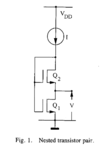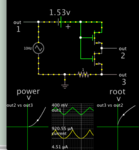promach
Advanced Member level 4

Simple CMOS Analog Square-Rooting and Squaring Circuits
For Simple CMOS Analog Square-Rooting and Squaring Circuits , how to derive equations 13 and 16 ?
For Simple CMOS Analog Square-Rooting and Squaring Circuits , how to derive equations 13 and 16 ?



